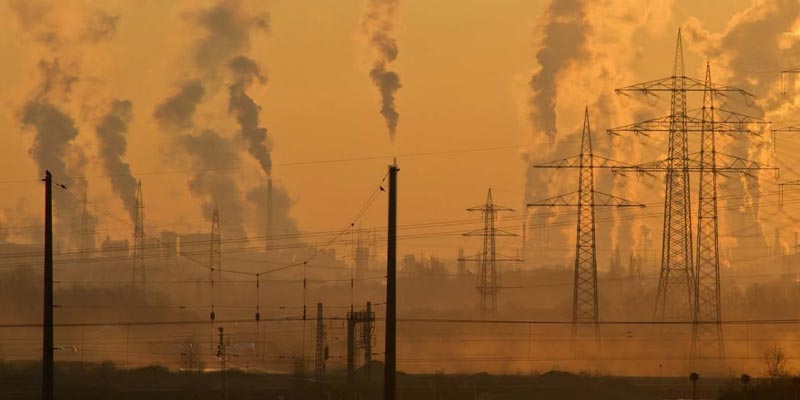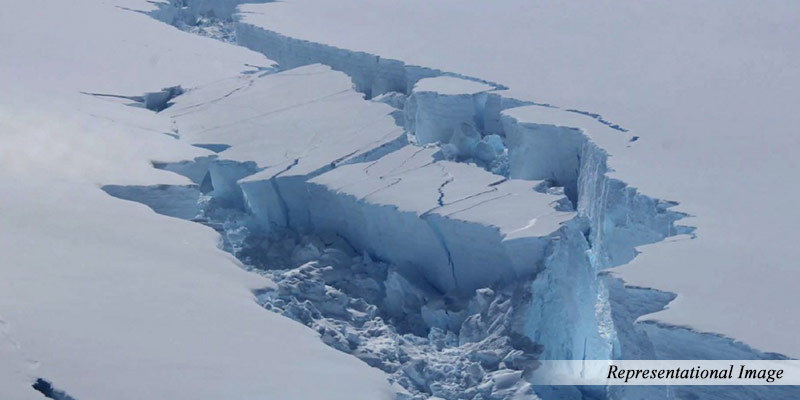- World
- Mar 22
What is IPCC Synthesis Report?
• The world is very likely to miss the most important climate target of limiting global temperature rise to 1.5 degrees Celsius above pre-industrial levels but drastic and urgent action in this decade can prevent it, said the Intergovernmental Panel on Climate Change’s (IPCC) Synthesis Report.
• It outlines the many options that can be taken now, to reduce greenhouse gas emissions and adapt to human-caused climate change.
• The report brings into sharp focus the losses and damages experienced now, and expected to continue into the future, which are hitting the most vulnerable people and ecosystems especially hard.
• There are multiple, feasible and effective options to reduce greenhouse gas emissions and adapt to human-caused climate change, and they are available now.
• This Synthesis Report underscores the urgency of taking more ambitious action and shows that, if we act now, we can still secure a liveable sustainable future for all.
• As the narrow window of opportunity to stop climate change rapidly closes, the choices that governments, the private sector, and communities now make — or do not make — will go down in history.
What is the role of IPCC?
• The Intergovernmental Panel on Climate Change (IPCC) is the UN body for assessing the science related to climate change. It was established by the United Nations Environment Programme (UNEP) and the World Meteorological Organisation (WMO) in 1988 to provide political leaders with periodic scientific assessments concerning climate change, its implications and risks, as well as to put forward adaptation and mitigation strategies.
• In the same year the UN General Assembly endorsed the action by the WMO and UNEP in jointly establishing the IPCC.
• The IPCC has 195 member states that are members of the UN or WMO.
• Thousands of people from all over the world contribute to the work of the IPCC.
• IPCC assessments provide governments, at all levels, with scientific information they can use to develop climate policies. IPCC assessments are a key input into the international negotiations to tackle climate change.
The Sixth Assessment Report
The IPCC has three working groups:
i) Working Group I addresses the physical science of climate change.
ii) Working Group II focuses on the impact, adaptation and vulnerability associated with climate change.
iii) Working Group III deals with the mitigation of climate change.
• It also has a Task Force on Greenhouse Gas Inventories that develops methodologies for measuring emissions and removals.
• The IPCC publishes comprehensive scientific assessments every six to seven years. The previous one, the Fifth Assessment Report, was completed in 2014 and provided the main scientific input to the Paris Agreement.
• The Sixth Assessment Report (AR6) was produced with contributions by its three Working Groups and a Synthesis Report, three Special Reports, and a refinement to its latest Methodology Report.
• The 37-page report was distilled from thousands of pages of previous assessments after a week of deliberations in Interlaken, Switzerland.
• The climate time-bomb is ticking. The IPCC report is a how-to guide to defuse the climate time-bomb.
• The summary report is designed to provide clarity for policymakers as they consider further action to slash emissions.
Nearly half the population vulnerable to climate impacts
• In 2018, IPCC highlighted the unprecedented scale of the challenge required to keep warming to 1.5°C. Five years later, that challenge has become even greater due to a continued increase in greenhouse gas emissions. The pace and scale of what has been done so far, and current plans, are insufficient to tackle climate change.
• More than a century of burning fossil fuels as well as unequal and unsustainable energy and land use has led to global warming of 1.1°C above pre-industrial levels. This has resulted in more frequent and more intense extreme weather events that have caused increasingly dangerous impacts on nature and people in every region of the world.
• Every increment of warming results in rapidly escalating hazards. More intense heatwaves, heavier rainfall and other weather extremes further increase risks for human health and ecosystems. In every region, people are dying from extreme heat. Climate-driven food and water insecurity is expected to increase with increased warming. When the risks combine with other adverse events, such as pandemics or conflicts, they become even more difficult to manage.
• Around 3.3-3.6 billion people are highly vulnerable to climate change. Human and ecosystem vulnerability are interdependent. Regions and people with considerable development constraints have high vulnerability to climatic hazards. Increasing weather and climate extreme events have exposed millions of people to acute food insecurity and reduced water security.
• Climate change has caused substantial damages, and increasingly irreversible losses, in terrestrial, freshwater, cryospheric, and coastal and open ocean ecosystems. Hundreds of local losses of species have been driven by increases in the magnitude of heat extremes with mass mortality events recorded on land and in the ocean.
• Impacts on some ecosystems are approaching irreversibility such as the impacts of hydrological changes resulting from the retreat of glaciers, or the changes in some mountain and Arctic ecosystems driven by permafrost thaw.
• In urban areas, observed climate change has caused adverse impacts on human health, livelihoods and key infrastructure. Hot extremes have intensified in cities.
• Urban infrastructure, including transportation, water, sanitation and energy systems have been compromised by extreme and slow-onset events, with resulting economic losses, disruptions of services and negative impacts to well-being. Observed adverse impacts are concentrated amongst economically and socially marginalised urban residents.
• Global warming will continue to increase in the near term (2021-2040) mainly due to increased cumulative CO2 emissions in nearly all considered scenarios and modelled pathways.
• Continued global warming is projected to further intensify the global water cycle, including its variability, global monsoon precipitation, and very wet and very dry weather and climate events and seasons. In scenarios with increasing CO2 emissions, natural land and ocean carbon sinks are projected to take up a decreasing proportion of these emissions.
• With further warming, every region is projected to increasingly experience concurrent and multiple changes in climatic impact-drivers. Compound heatwaves and droughts are projected to become more frequent, including concurrent events across multiple locations.
Key barriers to adaptation
• Progress in adaptation planning and implementation has been observed across all sectors and regions, generating multiple benefits. Growing public and political awareness of climate impacts and risks has resulted in at least 170 countries and many cities including adaptation in their climate policies and planning processes.
• Despite progress, adaptation gaps exist across sectors and regions, and will continue to grow under current levels of implementation, with the largest adaptation gaps among lower income groups.
• Key barriers to adaptation are limited resources, lack of private sector and citizen engagement, insufficient mobilisation of finance, low climate literacy, lack of political commitment, limited research and/or slow and low uptake of adaptation science, and low sense of urgency.
• There are widening disparities between the estimated costs of adaptation and the finance allocated to adaptation. Adaptation finance has come predominantly from public sources, and a small proportion of global tracked climate finance was targeted to adaptation and an overwhelming majority to mitigation.
• Current global financial flows for adaptation, including from public and private finance sources, are insufficient and constrain implementation of adaptation options, especially in developing countries.
• Adverse climate impacts can reduce the availability of financial resources by incurring losses and damages and through impeding national economic growth, thereby further increasing financial constraints for adaptation, particularly for developing and least developed countries.
• The adoption of low-emission technologies lags in most developing countries, particularly least developed ones, due in part to limited finance, technology development and transfer, and capacity.
What needs to be done?
• In this decade, accelerated action to adapt to climate change is essential to close the gap between existing adaptation and what is needed.
• Keeping warming to 1.5°C above pre-industrial levels requires deep, rapid and sustained greenhouse gas emissions reductions in all sectors.
• Emissions should be decreasing by now and will need to be cut by almost half by 2030, if warming is to be limited to 1.5°C.
• The solution lies in climate resilient development. This involves integrating measures to adapt to climate change with actions to reduce or avoid greenhouse gas emissions in ways that provide wider benefits.
• For example: access to clean energy and technologies improves health — especially for women and children, low-carbon electrification, walking, cycling and public transport enhance air quality, improve health, employment opportunities and deliver equity.
• The economic benefits for people’s health from air quality improvements alone would be roughly the same, or possibly even larger than the costs of reducing or avoiding emissions.
• Climate resilient development integrates adaptation and mitigation to advance sustainable development for all, and is enabled by increased international cooperation including improved access to adequate financial resources, particularly for vulnerable regions, sectors and groups, and inclusive governance and coordinated policies.
• Climate resilient development becomes progressively more challenging with every increment of warming. This is why the choices made in the next few years will play a critical role in deciding our future and that of generations to come.
• To be effective, these choices need to be rooted in our diverse values, world views and knowledge, including scientific knowledge, indigenous knowledge and local knowledge. This approach will facilitate climate resilient development and allow locally appropriate, socially acceptable solutions.
• There is sufficient global capital to rapidly reduce greenhouse gas emissions if existing barriers are reduced. Increasing finance to climate investments is important to achieve global climate goals.
• Governments, through public funding and clear signals to investors, are key in reducing these barriers. Investors, central banks and financial regulators can also play their part.
• There are tried and tested policy measures that can work to achieve deep emissions reductions and climate resilience if they are scaled up and applied more widely. Political commitment, coordinated policies, international cooperation, ecosystem stewardship and inclusive governance are all important for effective and equitable climate action.
• If technology, know-how and suitable policy measures are shared, and adequate finance is made available now, every community can reduce or avoid carbon-intensive consumption. At the same time, with significant investment in adaptation, we can avert rising risks, especially for vulnerable groups and regions.
• Climate, ecosystems and society are interconnected. Effective and equitable conservation of approximately 30-50 per cent of the Earth’s land, freshwater and ocean will help ensure a healthy planet.
• Urban areas offer a global scale opportunity for ambitious climate action that contributes to sustainable development.
• Changes in the food sector, electricity, transport, industry, buildings and land-use can reduce greenhouse gas emissions. At the same time, they can make it easier for people to lead low-carbon lifestyles, which will also improve health and wellbeing. A better understanding of the consequences of overconsumption can help people make more informed choices.
Manorama Yearbook app is now available on Google Play Store and iOS App Store




